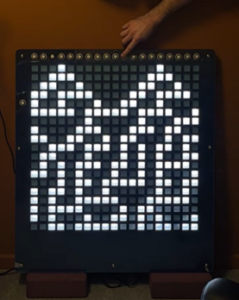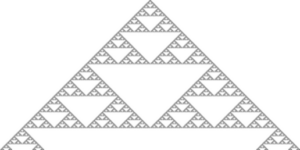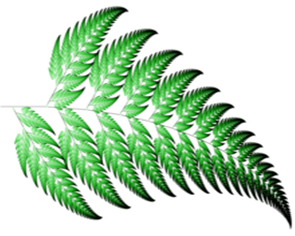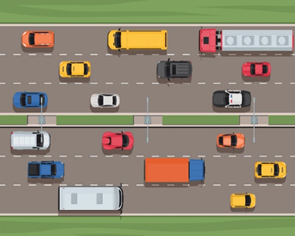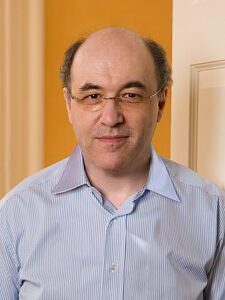Light Up
Tasks
|
||||||
MathsLight Up creates patterns known as elementary cellular automata. Whether a light is on or off depends on the status of the three lights immediately above it. These simple rules can result in surprisingly complex pattern, like those seen in nature. Our exhibit demonstrates four rules that have particularly special properties: Rule A (aka rule 30): This rule is chaotic, where small changes result in increasingly different patterns. Similar patterns are found on the shells of sea snails. Rule B (aka rule 90): One light on the first row will result in a pattern made of triangles of different sizes known as a Sierpinski triangle. The Sierpinski triangle is an example of a fractal – patterns that repeat themselves on a larger scale. Self-similar patterns like this can also be found in coastlines and fern leaves. Rule C (aka rule 110): This pattern has stable and chaotic behaviour. This rule can be used to perform calculations. In fact, it can do any calculation that a computer can do, making it Turing complete. Rule D (aka rule 184) Each light on the first row eventually results in evenly spaced diagonal stripes. This is an example of stable and periodic behaviour. These simple patterns are used to model traffic flow, where each light represents a car travelling from left to right. Each rule is defined using 8 T-shaped patterns. For each T-shape, the light underneath can be on or off. This means there are exactly 256 different rules to explore. |
||||||
HistoryIn the 1940s, Hungarian-American mathematician John von Neumann was considering robots that could build other robots. This could be represented with a grid and some simple rules. Von Neumann called these designs cellular automaton and was an early exploration of artificial life. In the 1970s, English mathematician John Conway created a two-dimensional cellular automaton called the Game of Life. The game became very popular with mathematicians and computer scientists who discovered that the game led to some very complex behaviour. In the 1980s, another English mathematician, Stephen Wolfram, began to systematically study one-dimensional cellular automaton (also known as elementary cellular automaton) that display a variety of complex behaviour. It is possible that complexity in nature could be the result of similar rules. |
||||||
People
|
||||||
ApplicationsSome behaviour found in nature can be simulated using cellular automata including the interaction of brain neurons and patterns found on seashells. Cellular automaton can also be used to simulate fluid dynamics, create mazes in computer games, and generate pseudorandom numbers for codes and ciphers. |
||||||
Maths at HomeCreate your own pattern using elementary cellular automaton, all you need is some squared paper. Explore different elementary cellular automaton using this simulation. |

